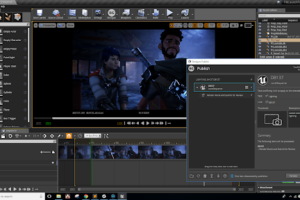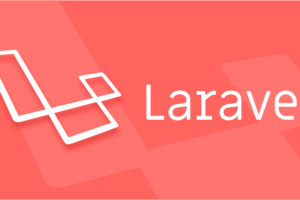Description
With this free course of 41 video lessons you will learn about the most important concepts of SEO
Search engine optimization (SEO) is a set of actions aimed at improving the positioning of a website in the list of results of Google, Bing, or other internet search engines.1 SEO works on technical aspects such as optimizing the structure and metadata of a website, but also applies at the content level.1 SEO works on technical aspects such as optimizing the structure and metadata of a website, but also applies at the content level. , in order to make them more useful and relevant to users.
Techniques to improve positioning
The activities to be developed involve both changes in programming, design and content, the same aligned to the guidelines issued by the search engines and good practices. Search engines such as Google12 and Bing13 have issued guidelines on this.
It is divided into internal and external positioning:
Internal positioning
These are improvements that the web developer can apply to the site in terms of content, appearance, accessibility, etc.
Responsive web design. Since April 2015, a new change of algorithm has spread the word that Google will penalize with a significant drop in position in SERPs (Search Engine Results Page) to those websites that lack adaptability to mobile devices.14 Moz ensures that this is not exactly the case and that even if a website is not responsive , at the moment, you don't have to go down the rankings. [citation required]
That the web can be easily tracked by search engine spiders is the first step. Search engine computers must have access to the website in order to process and display it in search engines. For that reason, crawl budget or crawl rate directly influences positioning: the higher the crawl frequency of a website and the more pages it crawls, the better its positioning. This point would encompass points where specified below, such as leaving pages more accessible, removing duplicate content, repairing 4xx, 5xx, 7xx errors, making websites as lightweight as possible so that the crawler consumes fewer resources.
Create quality content. The saying of "content is king" is common. Since 2015, Google has increasingly attached importance to the so-called "user web experience", being able to measure it in statistical terms as long as that particular website has been indexed by this search engine. The user experience relates, above all, to the adaptability to mobile devices, the content mentioned above, the usability and speed of charging time, among other factors. Similarly, the internal binding structure is key to usability and user experience (UX, User eXperience).
Structuring and designing a website with positioning in place means paying attention to it being functional, easy to access and attracting the user's attention.
Create unique titles and relevant descriptions of the content of each page. Each page is a business card for the search engine. Titles and descriptions are starting points for identifying relevant terms throughout the web by search engines. Best practices recommend writing titles between 60 and 70 characters long.
Make the web as accessible as possible: limit content in Flash, frames or JavaScript. This type of content does not allow tracking or tracking of information by the robot on different pages or sections. For them they are a flat space that you cannot navigate through.
Internally link the pages of our site in an orderly and clear manner. A "website map" in the code (both Google's and one present on the site) will allow the search engine to be given way through the different sections of the site in an orderly manner, improving its visibility. Including RSS files that can also be used as sitemaps.
Improve the user experience with design improvements and declining bounce rates.
Host the web on a reliable server.
Optimize URLs, we place the most important and meaningful keywords for the search. Friendly URL or friendly URL.
Install an SSL certificate and use HTTPS links across the page for internal and external links.15
Create a clean web design in advertising that delivers relevant content in the top half of the website16
Refresh the page with quality original content.
Optimize the loading time of a website to achieve bandwidth reduction, increase conversion rate and improve user experience. (Web Performance Optimization or WPO)
Use proper website tagging:
Use bold or italic in the contents for the keywords you intend to position.
Use the "meta" tags (description and title) with keywords, strategically chosen earlier. The "meta title" tag is the most important on-page factor for positioning, after general content. The "meta description" tag provides a brief explanation of the content of a page and is typically used by search engines to display a brief summary of the page's content in search results.
Use the h1, h2, h3, etc. headers to highlight important terms, or titles. Keywords should be used in headers.
Using HTML5 and its different sections (header, body), as well as XHTML5, etc.
Keyword density: The number of times a keyword is repeated within the text must be between 1% and 4%. Use synonyms for those keywords, and do it naturally.
Use of CDN (content distribution networks), both for upload speed and for improving the user experience in different parts of the world.
Labels and breadcrued crumbs, for example, through a CMS.
External positioning
They are those techniques that are used to improve the awareness of the web in the online media. As a general rule, we seek to obtain mentions on the network, in the form of a link, of the website to be optimized.
Get other related themed websites to link to your website. To do this it is interesting to perform a search for those terms that you think should bring traffic to your website and study which of them have complementary content. If for example you want to position yourself by the term "hairdresser Madrid" it may be interesting to try to get backlinks from hairdressers from other cities.
Right now there are hundreds of social networks, for example Hi5, Facebook and, Orkut, in which to participate and get visits from our new "friends". For Google, the social network that has the greatest impact on SEO is Google Plus, which has taken the place in importance of Twitter and Facebook. [citation required]
En altae in important directories like Dmoz and Yahoo!. Directories have lost a lot of interest in search engines but they are still a good starting point to get links or a first crawl of your website by search engines. [citation required] Both require a human filter for inclusion which ensures the quality of the added webs, but also slows down and hinders their inclusion.
Register and participate in forums, preferably in thematic forums related to the activity of your website. Frequent participation has to be accompanied by real and valuable input to be taken into account as a qualified user, the detail of the success to get visits and increase the positioning is the link to your website presented in your firm. [citation required]
Write articles on other websites. Articles are a very powerful method to improve positioning and attract visits. If you can write some articles of a course, of the tricks of the day, the usefulness of the product of your website. [citation required]
Exchange content.
Name of the domain, without determining at what level of influence on positioning.






Reviews
There are no reviews yet.